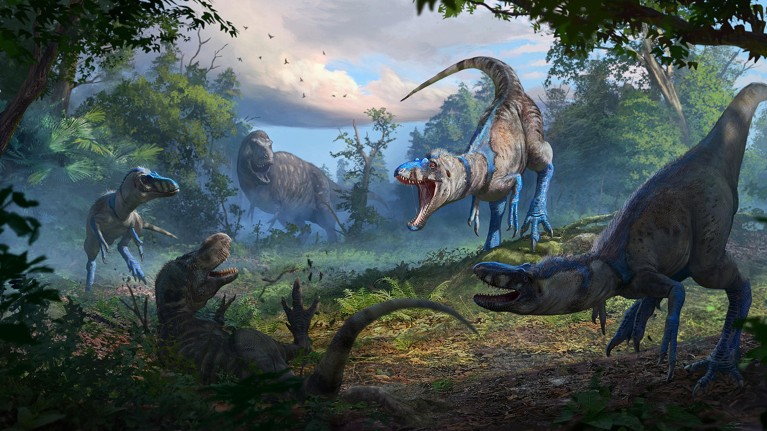‘Teenage T. rex’ fossil is actually a different species
Article Meta
Article Date: 30 October 2025
Article URL: https://www.nature.com/articles/d41586-025-03553-z
Article Image: image link
Summary
Palaeontologists report that a small tyrannosaur fossil long thought to be a teenage Tyrannosaurus rex is actually an adult of a different species, Nanotyrannus. The specimen — part of the famed ‘Duelling Dinosaurs’ pair from Montana’s Hell Creek Formation — shows anatomical differences (proportionally longer arms, a shorter tail and sharper, less curved teeth) and bone-growth patterns that indicate maturity. The study, by Lindsay Zanno and James Napoli and published in Nature, used histological analysis of growth rings to estimate age and growth rate, concluding Nanotyrannus was a distinct, small-bodied, fast predator rather than a juvenile T. rex.
Key Points
- The fossil previously labelled a “teenage T. rex” belongs to Nanotyrannus, a separate small-bodied tyrannosaur species.
- Nanotyrannus was roughly half the length and about one-tenth the mass of a full-grown T. rex, but was an adult when it died.
- Anatomical differences include proportionally longer, stronger arms, a shorter tail, and straighter, sharper teeth suited for speed and agility.
- Researchers used bone histology — counting and analysing growth rings — to determine age and growth rates, comparing patterns with living relatives like crocodiles.
- The specimens come from the Hell Creek Formation and date to the latest Cretaceous, around 67 million years ago.
- The finding affects how scientists interpret tyrannosaur diversity, life history and ecological roles at the end of the Cretaceous.
Content Summary
The new analysis focuses on the “Duelling Dinosaurs” — a Triceratops and a small tyrannosaur fossil found in combat. Zanno and Napoli examined a thin slice of fossil bone to read growth rings (similar to tree rings) and compared growth trajectories with those of living reptiles. The pattern of slowed and sped bone growth indicates the small tyrannosaur had reached adulthood, contradicting the idea that it was merely a juvenile T. rex.
Beyond reclassifying a single specimen, the work supports the existence of a distinct small tyrannosaur species, Nanotyrannus, which would have coexisted with T. rex at the close of the Cretaceous. The species appears adapted for speed and agility, suggesting different predatory niches among late Cretaceous tyrannosaurs.
Context and relevance
This study addresses a long-running debate in palaeontology about whether small tyrannosaur fossils are juveniles of larger species or separate taxa. Demonstrating that Nanotyrannus specimens were adults strengthens the case for greater tyrannosaur diversity and has implications for reconstructing predator–prey dynamics, ecosystem structure and evolutionary pathways in the latest Cretaceous. It also showcases how histology can settle arguments that morphology alone has struggled with.
Why should I read this?
Short version: if you like dinosaurs, scientific detective work or how a single bone slice can rewrite a story, this is for you. The paper settles a hotly contested ID — not just trivia, but a piece that reshapes how palaeontologists see tyrannosaur diversity and behaviour. We’ve skimmed the technical bits so you don’t have to; read on if you want the neat methods and the evolutionary fallout.

